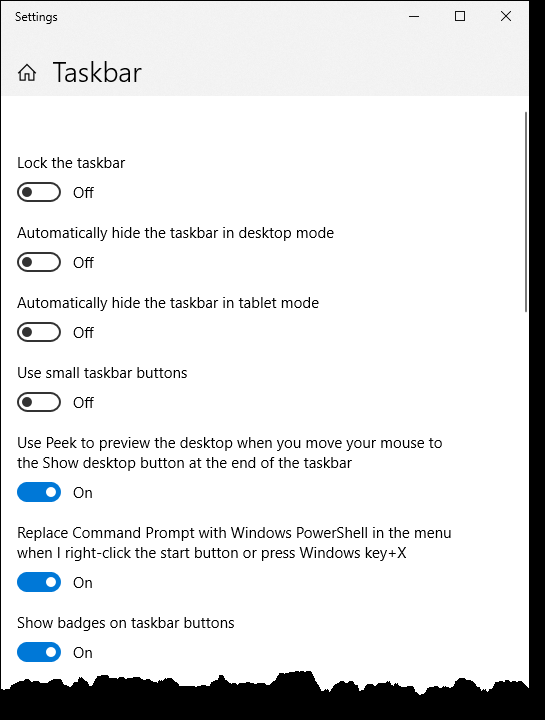With multiple displays, you can control how the Taskbar looks on those displays. You have a few choices. You can have the Taskbar be on each monitor, you can set things up so that the Taskbar resides only on your primary monitor, and you can control which buttons appear on different monitors' Taskbars.
To arrive at the place that lets you customize your Taskbar, right-click an empty space on your Taskbar and select Taskbar Settings from the resulting Context menu. The following window appears: (See Figure 1.)

Figure 1. Some Taskbar settings.
What is shown in the figure are the top Taskbar settings. To get to the ones dealing with multiple displays you need to scroll down a bit. When you get there, you'll see an on/off switch that determines whether your Taskbar is shown on all displays or only on the main one. Next is a drop-down list where you can set how Taskbar buttons are shown: All taskbars, Main taskbar and taskbar where window is open, or Taskbar where window is open.
There is one final drop-down list, where you can set how buttons are to be combined on other taskbars. You can combine buttons on other Taskbars: Always (hide labels), When taskbar is full, or Never.
![]() This tip (13587) applies to Windows 10.
This tip (13587) applies to Windows 10.
Windows provide a surprising amount of flexibility when it comes to what you see on the screen. You can even make changes ...
Discover MoreWhen you work on your computer late at night the glow from your computer monitor can affect your sleep. Why not setup ...
Discover MoreThe orientation of your screen is not limited to the default orientation when you connect it to your computer. You can ...
Discover More2018-11-21 15:03:51
Bud Ingersoll
I appreciate placing the icon in the "taskbar where the window is open". Quite useful.
Copyright © 2025 Sharon Parq Associates, Inc.
Comments